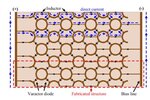mondeepsaikia
Newbie level 3
I have 10 PIN diodes in series.
I need to switch these PIN diodes on(~11V) for 0.5ms and off for 0.5ms.
How can i do this using arduino or any other microcontroller?
I need to switch these PIN diodes on(~11V) for 0.5ms and off for 0.5ms.
How can i do this using arduino or any other microcontroller?
